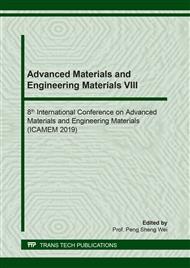p.137
p.144
p.152
p.157
p.163
p.171
p.176
p.182
p.190
Effect of Different Hole-Making Technology on Fatigue Properties of Directionally Solidified Alloy IC10
Abstract:
The fatigue tests were carried out under two kinds of hole-making technology, forming EDM and high-speed EDM. The hole taper and fracture surface of the sample were compared and analyzed. The finite element model with hole taper was established and the influence of the hole making technology on fatigue life was analyzed. Three conclusions have been obtained:First, the inner surface of the hole of the formed EDM is relatively flat, the residual deposit formed during the processing is less. and thickness of the recast layer and the content of oxygen are also lower than the high-speed EDM. Second,The fracture surface of the formed EDM shows obvious crack source, while the high-speed EDM has no crack source, and the area of the crack propagation area of the high-speed EDM is obviously larger. Third,the high-speed electric spark machining has obvious taper, under the load condition, the stress at the large hole end is higher than that at the small hole end, and large strain and damage are generated at the same time, resulting in crack initiation at the end of the large hole.
Info:
Periodical:
Pages:
163-170
Citation:
Online since:
July 2019
Authors:
Price:
Сopyright:
© 2019 Trans Tech Publications Ltd. All Rights Reserved
Share:
Citation:


